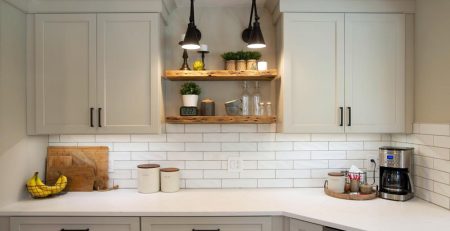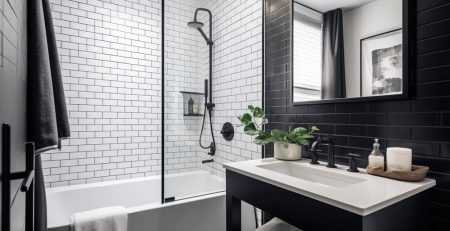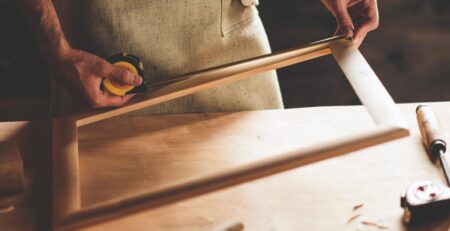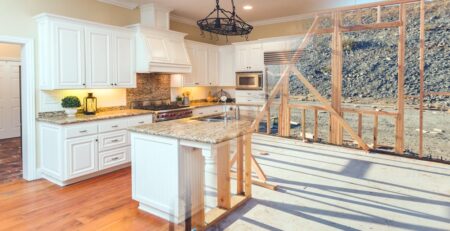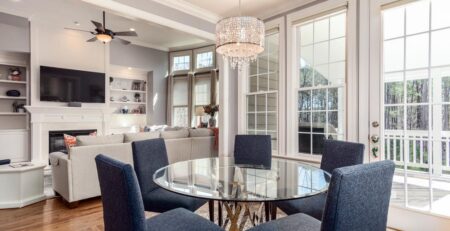Oakland County, Michigan, is a region rich with architectural diversity, where homes display a wide range of styles from historic Tudor Revival estates to elegant colonial designs and mid-century modern masterpieces. With a blend of suburban charm and historical significance, many homeowners in this area face the challenge of maintaining their property’s classic appeal while incorporating modern features. This blending of styles requires careful planning, a clear design vision, and professional expertise like that offered by design-build firms.
For those looking to renovate or build within Oakland County, the goal is often to achieve a balance where modern functionality and aesthetics coexist with the character of the original architecture. Let’s explore key strategies and considerations for achieving that balance, along with examples of materials, techniques, and features that can help create a harmonious fusion of styles.
Understanding Oakland County’s Architectural Heritage
Oakland County’s neighborhoods are a tapestry of architectural history. Iconic homes such as Meadow Brook Hall, a sprawling Tudor Revival estate completed in 1929, showcase the detailed craftsmanship of earlier eras. Brick exteriors, slate roofs, decorative woodwork, and leaded glass windows are common features in these classic styles. At the same time, modernist influences, particularly from the mid-20th century, brought new perspectives with their emphasis on minimalism, large windows, and open floor plans.

Today, many homeowners want to honor these architectural legacies while also accommodating modern lifestyles. Whether it’s a bathroom renovation in Bloomfield Hills or a custom kitchen remodel in Rochester Hills, it’s essential to understand the architectural context before blending styles.
Combining Materials for Balance and Harmony
One of the most effective ways to merge traditional and modern styles is through a thoughtful combination of materials. Classic elements such as stone, brick, or wood often provide warmth and texture, while contemporary materials like steel, glass, and polished concrete offer sleek, minimalist contrast. For example:
- Exterior Updates: A historic home might maintain its original stone or brick façade while incorporating modern features such as expansive glass doors leading to a backyard or patio.
- Interior Enhancements: A kitchen remodel may retain original wooden beams while adding modern quartz countertops and stainless steel appliances.
By juxtaposing these materials, homeowners can achieve a timeless look that respects both past and present design philosophies.
Mixing Furniture and Décor
The interior design of a home plays a significant role in blending styles. A balance of traditional and modern furniture helps create visual interest without overwhelming the space. For instance:
- A classic wooden dining table can be paired with modern acrylic or upholstered chairs.
- Traditional artwork, such as oil paintings in ornate frames, might be displayed alongside contemporary abstract pieces to create a dynamic focal point.
- Lighting fixtures are another powerful tool. A vintage chandelier in a foyer can make a bold statement when paired with minimalist sconces and recessed lighting.
These subtle contrasts allow each design element to stand out while contributing to an overall cohesive aesthetic.
“By preserving significant architectural elements and updating areas where functionality is critical, homeowners can enjoy modern convenience without losing the soul of their home.”
Architectural Details: Modern Functionality Meets Traditional Charm
Blending styles successfully often means retaining key architectural details while updating functional aspects of the home. A good approach to remodeling emphasizes preserving the charm of classic details like crown molding, decorative trim, or coffered ceilings, while seamlessly integrating modern features.
Here are a few techniques to achieve this:
- Entryways: Preserve the grandeur of a traditional entry with original wood doors but add contemporary hardware or sidelights to introduce modern flair.
- Bathrooms: In historic homes, a modern bathroom can incorporate marble tile that reflects the period’s elegance while using frameless glass showers and sleek plumbing fixtures for a clean, updated look.
- Open Floor Plans: Traditional homes often have compartmentalized layouts, but modern living calls for open, airy spaces. Removing non-load-bearing walls can create open-concept kitchens and living areas without compromising the home’s character.
By preserving significant architectural elements and updating areas where functionality is critical, homeowners can enjoy modern convenience without losing the soul of their home.
Balancing Color Schemes
A neutral color palette can serve as a perfect foundation for blending styles. Colors like white, cream, soft gray, or beige create a clean, airy backdrop that highlights both traditional and modern design elements. Pops of color can be introduced through accent pieces such as rugs, throw pillows, or artwork to add vibrancy and personal style.
Modern designs often favor clean, monochromatic schemes, while traditional homes may use richer, warmer tones. Finding a middle ground—such as using soft, muted earth tones—ensures that both styles feel connected. This subtle interplay of color brings warmth and depth to a space, making it both elegant and approachable.

Transitional Design as a Bridge Between Styles
Transitional design is a popular choice for blending modern and traditional elements seamlessly. This style emphasizes simplicity, comfort, and a mixture of textures, making it ideal for Oakland County homes undergoing renovation. Key features of transitional design include:
- Neutral, balanced color palettes.
- A mix of traditional and modern materials, such as wood and glass.
- Furnishings that prioritize comfort and clean lines, blending classic shapes with contemporary finishes.
Transitional design is adaptable and timeless, making it a go-to solution for many homeowners who want a space that feels both rooted in history and ready for the future.
Challenges of Blending Styles and How to Overcome Them
Although blending modern and classic styles offers numerous aesthetic benefits, it also presents challenges. The most common challenge is maintaining a cohesive look. Homeowners may find that mixing too many styles or design elements leads to a disjointed appearance. Working with an experienced design-build firm helps alleviate this issue by ensuring that the design vision is consistent and harmonious throughout the project.
Another challenge is the preservation of historically significant features. Renovations in older homes may require special care to protect original materials, such as hardwood flooring or intricate moldings. Collaborating with experts who understand both the structural and aesthetic needs of historic homes is essential to avoid costly mistakes.
Finally, investment considerations must be factored into the planning process. Achieving a blend of modern and traditional design may involve higher upfront costs due to the complexity of different materials and styles. However, this investment often pays off by increasing the home’s value and appeal.
Design+Build Renovations in Oakland County
Blending modern designs with classic Oakland County architecture is a rewarding process that creates spaces reflecting both history and contemporary innovation. By combining materials thoughtfully, mixing furniture styles, preserving key architectural elements, and maintaining a balanced color palette, homeowners can craft environments that are both functional and visually captivating.
At Renovation By Design, we specialize in helping Oakland County homeowners achieve these transformations. Our design-build approach ensures every project is handled with care, from initial concept to final execution, resulting in homes that stand the test of time while embracing modern living.
Connect with our team of design+build experts at (248) 260-7639 or contact us here to get your project started.



